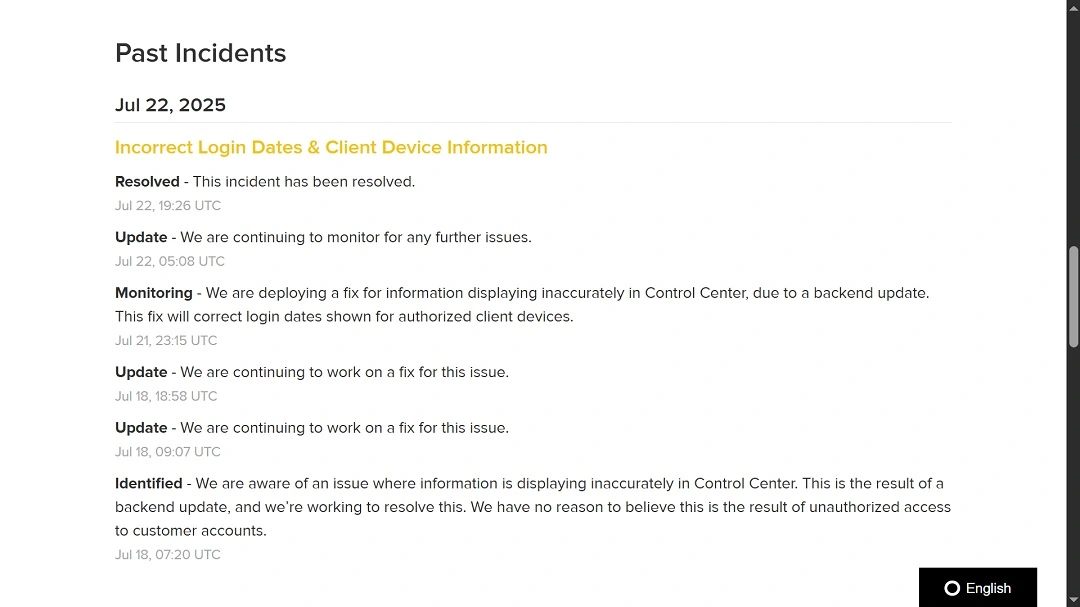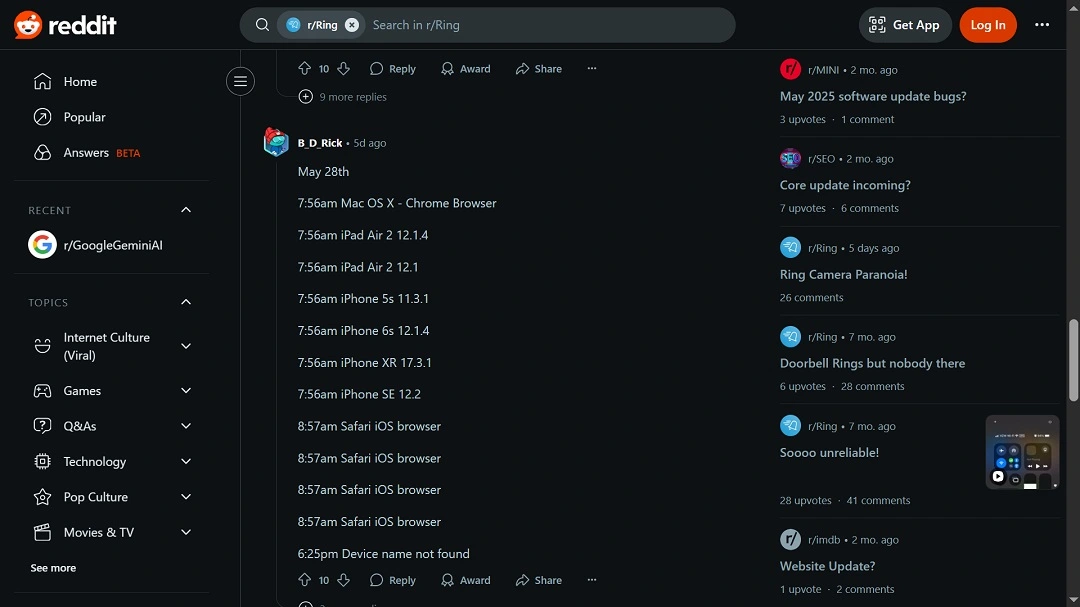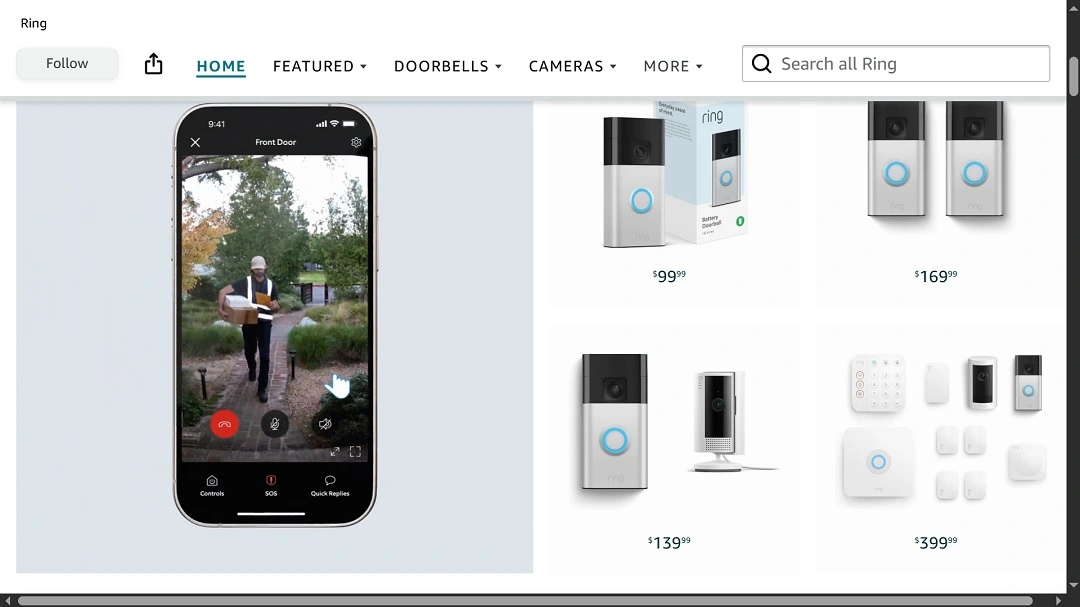People buy smart home camera-equipped doorbells for many reasons, but mostly, the reason is to modernize and secure their homes. By using smart home devices, users can manage everything from their phone, whether they are home or away. But few things can be as disquieting as learning that unknown users have been accessing your smart door-cam — and the footage and data within it.
This is exactly what a wave of users are saying happened with their Amazon Ring devices, despite Amazon itself denying that it was a hack. So, what gives? Let’s explore the incident to answer this and other questions.
Users are struggling to identify what went wrong with Ring on May 28
Amazon Ring users took to TikTok, Reddit, and X to show in detail how lists of unknown devices had accessed their Ring app on May 28.

In the posts, users claimed that the incident was a “hack” and asked others to share the post to spread awareness of the issue to other Ring users.
Amazon, however, denies that this was anything other than a “bug.”
Picking up the social media chatter, a journalist writing for Forbes reported on the issue, finding several logins on his own Ring device.
On the Ring status site, on July 22, after several days of briefly reporting that they “were aware of a ‘bug’ that incorrectly displayed prior login dates as May 28, 2025,” and that they were “working to fix the issue,” the company finally listed the issue as “Resolved.”

Offering only generic statements and little in the way of actual information, these incident reports have left the Ring users trying to understand what happened with their door cam security technology and accounts.
How incidents like the Amazon Ring “bug” erode user trust
Many users expressed concern about what they found when they looked into their Ring accounts and saw connections by various unknown devices on May 28.
While some users claimed that the list of unknown connected devices on May 28 consisted only of old phones previously used in the account, others pointed out that the devices that showed up (many of which were Macs, iPads, and iPhones) were completely unknown to them. Some had never owned the type of devices listed, nor did they know anyone who owned them.

This incident happened on May 28, yet the Amazon Ring status page only acknowledged the incident and “resolved” it on June 22. This delay in recognizing an incident certainly does not help to build user trust.
Furthermore, Malwarebytes reported that the “bug” was linked to a “backend update.” However, it seems that no details on what this update was for have been provided by the company.
We often see incidents or “update glitches” being addressed only after popular technology media pick up on users’ concerns and report on the issue. This shows a reactive and not a proactive customer-centered strategy, which can also erode user trust.
In another unrelated case, Amazon recently warned over 200 million Prime customers that their accounts were being targeted by spear phishing threat actors in an active campaign. Naturally, serious risks to user data like this also erode users’ trust.
Is my Amazon Ring hacked?
Given the information we were able to access — including Amazon’s update notifications and users’ complaints, plus other resources — we can say that we have not found evidence that proves Ring devices have been hacked.
It may be possible that Amazon ran a backend update, and this led users to see unknown device activity for May 28. If this is the case, and the incident is a glitch, we see no reason why Amazon would not have notified all users about this bug earlier.
However, big tech companies like Amazon often offer non-human customer support services, and while automation allows them to process the volume of tickets they receive from users, it can also be perceived by users as talking to a faceless monolith.
What data can be accessed through Ring?
Naturally, given the sensitive nature of the data that can be accessed via a Ring device and similar smart home doorbell devices, the May 28 incident raises many good questions regarding user privacy.
Users should be aware that Amazon Ring stores various types of data, including video recordings, user interactions with the app, device information, and personal details like names, addresses, and phone numbers.

This data may be shared with advertising companies and with law enforcement. We must also point out that the amount of data that Ring generates and manages has raised eyebrows among top tech media, including Wired, ArsTechnica, and SpiceWorks.
A user who accesses your Ring can access the following data:
Personal info:
- Name
- Email address
- Phone number
Device and network data:
- Wi-Fi network name and signal strength
- Product model, serial number, and software version
- Custom names for your devices
Location data:
- GPS location of your phone (if geofencing is on)
Video and audio:
- Doorcam videos and photos that are stored on Amazon servers
- Audio and video recordings triggered by motion or doorbell presses
- App and website tracking information, including cookies, web beacons, and tracking tools on Ring’s website and app
- Logs of when you use the app, what you tap or zoom, and device/browser info
Third-party info:
- Social media or other data if you log in via third-party services
- Information from friends, family, and neighbors, even if they’re not the account holder
Amazon Ring’s new focus shifts back to surveillance features
Last year, Ring disconnected the “Request for Assistance” feature that allowed law enforcement officers to ask people for camera footage through Ring’s Neighbors app. However, now with a new partner — Axon Enterprise — they reintroduced features to benefit public security and law enforcement.
Axon Enterprise, previously known as TASER International, holds the patent for the original taser electroshock technology used by law enforcement agencies and police departments across the United States. The technology and company were recently in the spotlight thanks to a Last Week Tonight investigation for unrelated issues.
What can users do to secure their smart doorbell?
If you have a Ring account, you can check what devices are authorized to access your account and remove any suspicious ones by navigating to the Ring app’s Control Center. You can also check out Ring’s guide on how to manage access to your Ring account and devices.
Additionally, the following tips can help you strengthen your security and privacy posture on any smart home doorbell device:
- Update your password: Use a strong, unique password that you haven’t used on other accounts. Avoid names, birthdays, or simple patterns.
- Enable 2-factor authentication (2FA): If your device or app supports it, turn on 2FA to require a second form of verification during the login process.
- Stay alert for phishing attempts: Be skeptical of emails or texts asking you to log in or “verify” your account. Go directly to the official website or app instead of clicking links.
- Review privacy and sharing settings: Regularly check what data is being collected, how it’s stored, and whether it’s being shared with third parties, especially if the device includes location or audio features.
If you are still concerned, you can go old-school and use an analog doorbell. This may be better for your peace of mind and data privacy and security concerns.
Final thoughts
While there is no concrete evidence to signal that Ring was hacked or breached, the incident raises important lessons.
It is also normal for users’ trust to erode when companies fail to address incidents more openly. Users should be aware of all the data that their smart home devices collect and manage. Configurations, settings, and security features are vital in securing your smart home technology.
This is an independent publication, and it has not been authorized, sponsored, or otherwise approved by Amazon Technologies, Inc. Ring is a trademark of Amazon Technologies, Inc.






